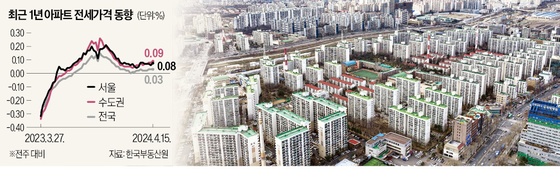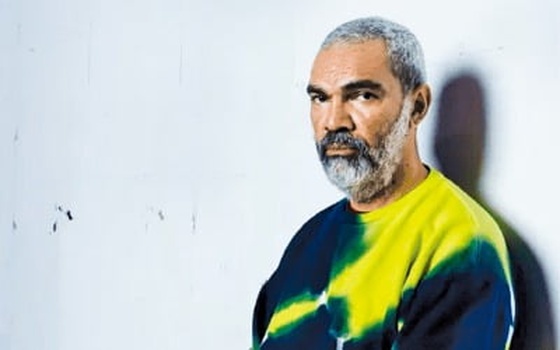입력2006.04.04 07:07
수정2006.04.04 07:11
기술과 주식시장의 거품이 꺼지면서 투자자들은 더욱 신중하게 되었다.
그러나 대다수 투자자들은 한국의 예금 금리가 4%미만으로 하락하고, 달러화 예금금리가 1% 미만이 되는 등 현재의 저수익 환경을 받아들이는 데에 어려움을 겪는 듯하다.
두 자리 단위의 수익률을 기대하는 사람들도 여전히 많다.
예를 들어 아직 15%대의 목표 ROE(자기자본이익률)를 발표하는 회사들이 있는가 하면,15%가 기대에 미치지 못한다며 만족하지 못하는 투자자들이 있다.
물론 두 자리 수의 수익률이 드문 현상은 아니다.
주식시장이 19%대의 수익을 낸 적도 있고,지난 몇 년간 채권시장마저도 두 자리 단위의 수익을 냈다.
유명한 가치투자가인 마크 파버는 그의 저서 'Tomorrow's Gold'에서 높은 투자수익 기대에 대해 간단하지만 인상적인 의견을 제시했다.
어느 투자자가 서기 1000년도에 1달러를 연5% 이율로 투자했다면 그의 운좋은 후손은 현재 세계 GDP의 3백만 배의 자산을 보유할 것이다.
하지만 파버는 5%의 장기 연수익조차도 허황되다고 한다.
왜냐하면 부(富)는 자연재해,전쟁,초인플레이션,혁명 뿐만 아니라 그보다 빈도가 더 높은 회계부정이나 단순히 잘못된 투자선택에 의해 감소하기 때문이다.
물론 과거에는 세자리 수익을 낼 수 있는 좋은 투자기회들도 있었다.
하지만 그 중 어떤 것도 오래 가지는 않았다.
회사의 평균존속률을 보면 사람의 수명보다 오랜 기업이 몇 되지 않음을 알 수 있다.
19세기의 철도와 수로 회사들도 파산했고,20세기의 자동차 및 라디오 회사들도 그와 같은 길을 걸었다.
얼마 전의 벤처들과 인터넷 회사들은 어떠했는가.
산업 전체가 사라지거나 파산하는 경우는 거의 없었지만 이익률은 곧 정상 또는 그 이하로 하락했다.
경쟁의 법칙이 지속적인 높은 수익률에 제동을 건다.
높은 투자수익을 지지하는 사람들은 고수익이 1천년간은 못되더라도 10~20년,혹은 5~10년간은 지속될 거라고 한다.
하지만 이에 대한 근거는 미약하다.
역사적으로 볼 때나 기본적인 경제원칙이나 단순한 상식에서 볼 때에도 고수익은 단명하였으며 향후 수년간의 지속성 또한 확신할 수는 없다.
마크 파버는 투자자들에게 다음과 같이 말한다. "언제나 저평가된 주식을 적기에 사들이는 것이 고평가된 주식을 신속하게 매도하는 것만큼 중요하다." 직관적으로 옳은 것처럼 들린다.
하지만 굉장한 투자 기회를 포착하기 위한 시도들은 여러 투자자들을 위기로 이끌 수 있고,그 위기는 여러 투자 마니아들과 버블을 형성할 수 있다는 것을 경고하고 싶다.
불행하게도 정확한 예견은 인간의 능력 밖에 존재하기 때문이다.
여기에서 평균적인 투자자들이 이끌어낼 수 있는 교훈은 분산이 투자의 가장 기본적인 규칙이라는 것이다.
시장의 리스크와 불확실성 때문에 '계란을 같은 바구니에 두지 말라'라는 오랜 격언의 의미가 새삼스럽다.
필자는 투자자들이 평균이상의 수익률을 약속하는 사모 주식형이나 헤지펀드와 같은 대체 상품을 멀리해야한다는 말을 하는 것이 아니다.
단지 실현가능한 수준의 수익률을 기대하라고 권한다.
대체상품들의 매력은 수익에만 있는 것이 아니라 투자의 다변화에 있다.
투자자들은 위험이 큰 만큼 수익도 큰 채권과 주식 같은 전통적인 자산을 중심으로 투자할 수도 있다.
하지만 그들의 부를 주식,채권,부동산,심지어 예술품 같은 여러 종류의 자산에 분산투자해야 한다.
또한 상품 뿐만 아니라,지역적으로도 다변화하는 것이 바람직하다.
과거를 되돌아볼 때 한 나라나 산업분야에서의 성공이 때로는 다른 나라 및 분야의 쇠퇴나 난관을 초래했다는 것을 기억해야 할 것이다.
이전 세대와 비교해보면 금융서비스의 발전과 금융시장의 세계화로 인해 방대한 분산투자가 쉽게 이루어질 수 있다.
뮤추얼펀드들은 전세계의 주식과 채권에 대한 접근을 용이하게 했으며, 심지어 해외의 헤지펀드나 부동산에도 분산투자할 수 있도록 했다.
이것은 규모가 큰 회사나 부유한 개인 뿐만 아니라 기본적으로 모든 이들에게 해당한다.
--------------------------------------------------------------
◆영어원문
Diversification is the name of the game The bursting of the technology and stock market bubble definitely made investors more sober.
Still, many have difficulty to accept the current low return environment with for example bank deposit rates in Korea at record lows of below 4% and dollar deposit rates even below 1%.
It seems double-digit returns are still in many minds, there seems to be a magical 15% p.a., which many companies have declared their return on equity target and many private equity investors consider a lower bound for expected returns.
Admittedly, double-digit returns are not at all an uncommon phenomenon.
Stock markets have delivered them say to 19% level.
Even bond markets delivered double-digit returns for the last few years.
Of course, such returns are not sustainable for extended periods of time.
In his book 'Tomorrow's Gold' Marc Faber, the renowned contrarian investor, makes a simple but striking argument for cautioning high investment return expectations.
If a wise ancestor of us had invested the equivalent of just 1 $ in the year 1000, not at 15% but at a seemingly modest 5% interest, the lucky heir now would own such a big fortune that invested at 6%, he or she would receive an annual interest income of 3 million times the current world GDP.
Faber draws the obvious conclusion that even an annual very long-term return of 5% is just a dream.
The reason is recurring massive wealth destruction through natural catastrophes, wars, hyperinflations, revolutions and certainly not to underestimate more profane but more widespread factors like fraud and simple folly.
Of course, during the world history there were many great investment opportunities with even triple digit returns, but none lasted too long.
Looking at the average lifespan of companies, only very few can manage to survive longer than a human beings lifetime.
Many railroad and waterway companies of the 19th century finally went bankrupt, a fate many car and radio companies of the early 20th century shared, not to mention the venture and internet companies of our time.
Of course, whole industries seldom completely disappear or get bankrupted, but their profit margins normally get back to normal or even sub par level in a quite short time.
The iron law of competition argues against persistent high returns.
The propagators of high investment returns will say that they never promised or expected such returns for a 1000 years, just for the next 10 to 20 or even only the next 5 to10 years.
But this is not too valid an argument.
If such longer-term returns are contradicted by history, basic economic principles and sheer common sense, why should they be more likely in near future.
Marc Faber draws the following lesson for investors: "At all times, the opportune selection of the 'right and undervalued investment theme' was of crucial importance - as was the speedy abandonment of fully valued popular themes that were bound to underperform."
That sounds intuitively right. I would caution however, that the drive to find the great investment opportunities lead many into disaster and itself was the cause for many investment manias and bubbles.
Unfortunately, perfect foresight is not a characteristic of human beings.
The lesson, at least the average investor should draw seems rather that diversification is the most important investment ground rule.
There are so many risk and uncertainties that the old dictum 'don't put all your eggs in one basket' has even grown in importance.The above certainly does not imply that investors should stay away from alternative investments like private equity or hedge funds which promise above average yield.
It just cautions about the realistic level of expected returns.
This does in no way make such alternative investments less attractive.
Their merits do not primarily stem from returns only but even more from their diversification benefits.
They can make a core investment in traditional assets like bonds and stocks more risk-return efficient.
Investors should spread their wealth over different asset classes like stocks and bonds and real estate, private equity and even consider commodities or art investments.
And, investments should be spread globally because no one really can know where and when the next great opportunity strikes.
And let's remember, historically great opportunities for some countries or industries often caused if not disasters then at least decline and hardship for others.
Compared to previous generations, the development of financial services and the globalization of financial markets made such a broad diversification easily accessible.
Mutual funds offer globally diversified stock or bond portfolios and even access to hedge fund and global real estate. And this not just for big institutions or wealthy individuals but for basically for everyone.
![[한경에세이] 비상이다. 비상!](https://img.hankyung.com/photo/202404/07.35991182.3.jpg)
![[허원순 칼럼] 22대 국회 '역대 최대' 법률가들의 4가지 책무](https://img.hankyung.com/photo/202404/07.30347388.3.jpg)
![[차장 칼럼] 실장·수석보다 힘 센 용산 비서관](https://img.hankyung.com/photo/202404/07.15766853.3.jpg)











